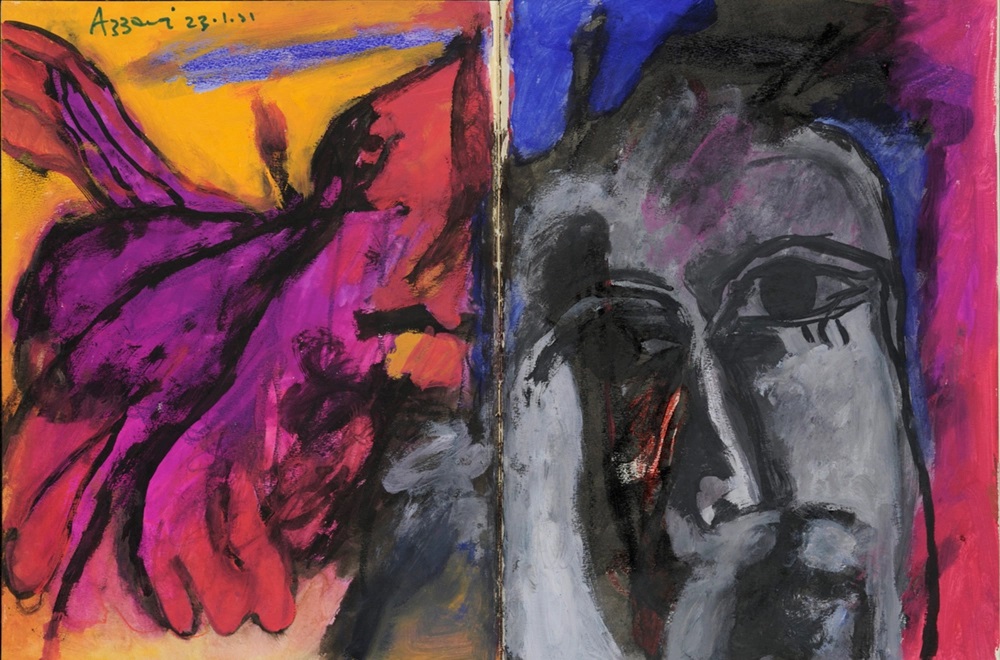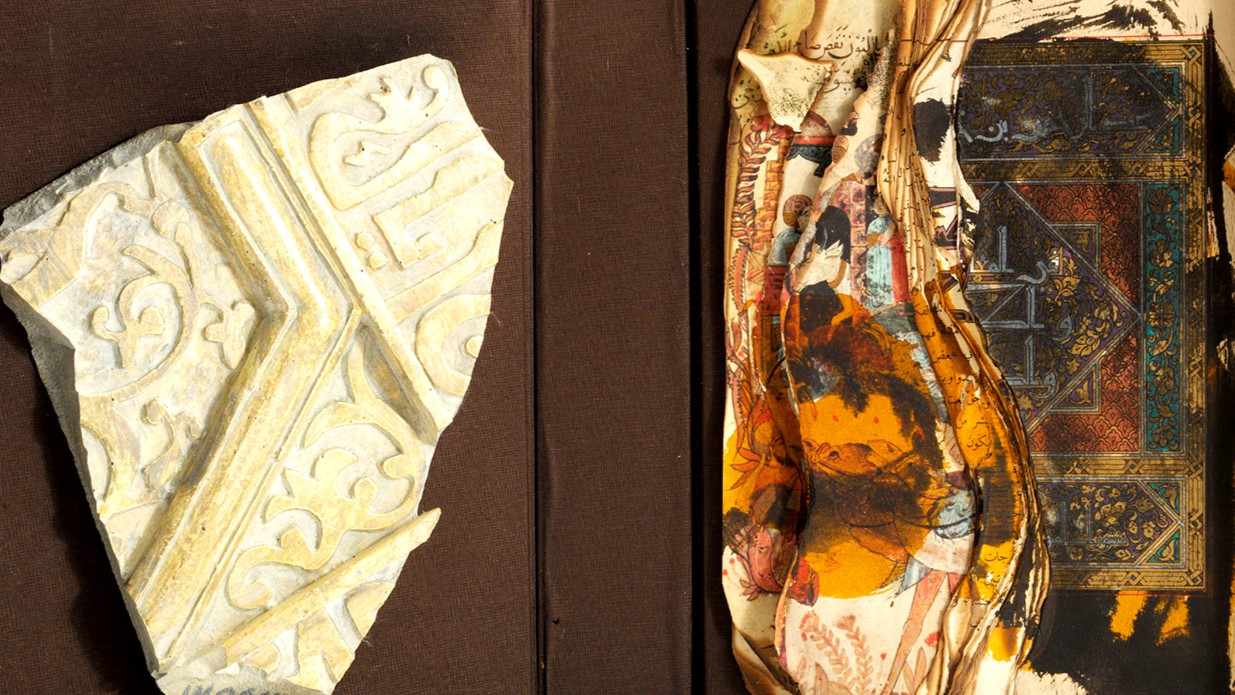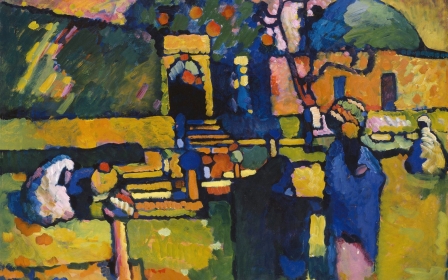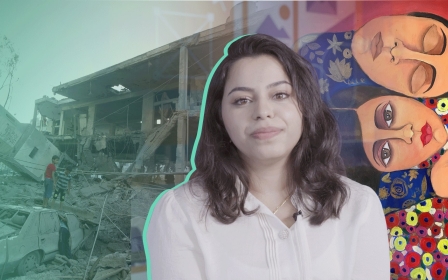Painting Poetry: Iraqi artist Dia al-Azzawi exhibits at Oxford's Ashmolean
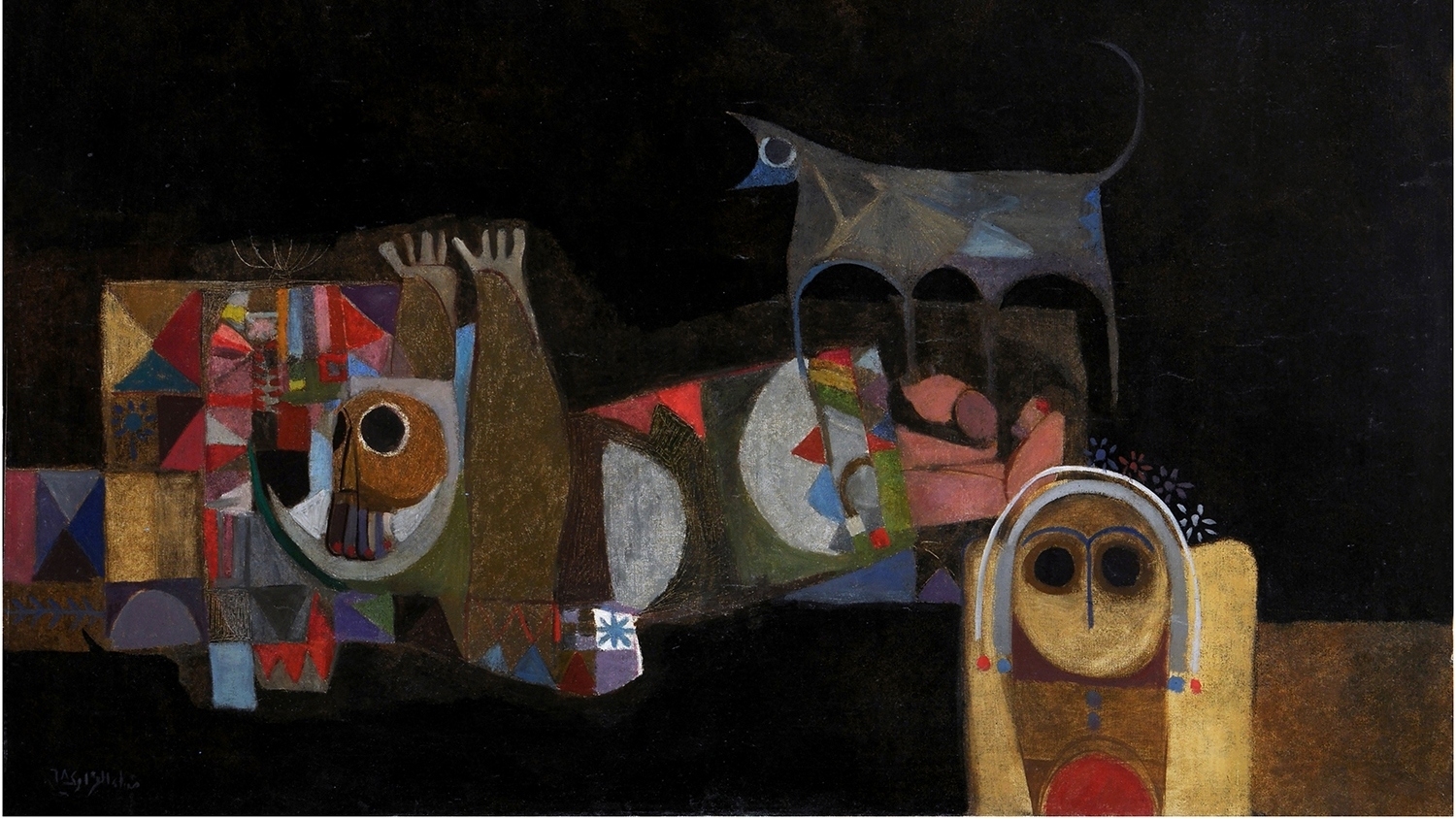
Twenty years after the US and UK-led invasion devastated Iraq, one of the country’s most prominent artists, Dia al-Azzawi, has a breathtaking exhibition in Oxford.
Painting Poetry is a collection of works that illuminate the horrors of that war, the Gulf War of 1991 and the crippling UN sanctions regime that followed, complemented by the words of a dozen great poets of the Arab world.
Iraq’s Saadi Youssef, Muzaffar al-Nawab, Abdul Zahra Zaki, Nabeel Yasin, Sargon Boulus and Dunya Mikhail, with Palestine’s Mahmoud Darwish, Jordan’s Amjad Nasser, Bahrain’s Qassim Haddad, Egypt’s Amal Dunqul and Ahmed Abdel Muti Hijazi, and Adonis from Syria, are integral to Azzawi’s inspiration.
Many were his friends. All of them knew lives of exile, arrest, prison, torture, revolution, poverty, plus love and respect. Handwritten words, lines or verses are often integrated into Azzawi’s work.
Poetry and verse remain major art forms in modern Iraq, whose poets were inspired by the literature of the medieval ages, when Iraq was a centre of culture in the Middle East.
New MEE newsletter: Jerusalem Dispatch
Sign up to get the latest insights and analysis on Israel-Palestine, alongside Turkey Unpacked and other MEE newsletters
Mosul: Panorama of Destruction
This is Azzawi’s first solo exhibition in the UK since 1978, though his work is on display at the Tate Gallery, the Victoria and Albert Museum and the British Museum.
He has had many solo exhibitions in France and the US and across the Arab world. The centrepiece here is a monumental black and white tapestry immortalising the impact of successive foreign wars on Iraq’s second city, Mosul.
Shown here in public for the first time, Mosul: Panorama of Destruction is 10 metres long and was created between 2017, when the Islamic State group (IS) was driven out of the city after three years of occupation, and 2022.
There is an inescapable echo of Pablo Picasso’s Guernica (1937), a massive oil painting inspired by images of the bombing raids on the city by German planes, at the request of General Franco’s army, during the Spanish civil war.
Picasso took three weeks to complete his black and white painting, which for decades has been an icon of anti-war protest.
Mosul: Panorama of Destruction must be another; the tapestry has a bench placed in front of it in the Ashmolean Museum, although it is hard to sit for long in front of these powerful fragments of destroyed life and people.
Poetry in the Galleries: on this tour, poets will explore and celebrate works on display in the Dia al-Azzawi: Painting Poetry exhibition. Poems will be recited next to the objects and artworks that inspired the poets. Find out more: https://t.co/l4pHkuLSzX pic.twitter.com/lwPqKXvSwQ
— Ashmolean Museum (@AshmoleanMuseum) March 4, 2023
In sharp contrast, much of the exhibition shows Azzawi’s more usual brilliant colours.
The scarlet and orange catalogue cover image, Of Layla: Qassim Haddad, is a work from Azzawi's distinctive genre called dafatir ("notebooks" in Arabic), a 20-metre series of folding pages where images and text merge.
European principles and Iraqi heritage
Azzawi was born in 1939 in Baghdad and from the late 1950s began to link with other artists. He initially studied archaeology before entering Baghdad's College of Fine Arts in the early 1960s.
Studying the ancient world by day and European painting by night "meant that I was working with European principles but at the same time using my heritage as part of my work,” he said.
The great myth of Gilgamesh is a key thread in his inspiration, and the exhibition has a fine piece from 1966, a study for The Epic of Gilgamesh.
In this period, Azzawi was director of the Iraqi Antiquities Department in Baghdad and also artistic director of the Iraqi Cultural Centre in London.
He was deeply involved in active arts community groups and in 1968 wrote the manifesto for the New Vision group, which promoted the idea of freedom of creativity within a framework of heritage.
The manifesto stated: “We are the new generation. We demand change, progression and creativity. Art stands in opposition to stasis. Art is continually creative. It is a mirror to the present moment and it’s the soul of the future.”
Azzawi is a man of collaboration, across the full range of artistic life: himself a painter, sculptor, writer. The exhibition shows this, as well as the breadth of his range of materials and forms, such as mixed media and boxes with sculptures, as well as the dafatir.
In the 1980s he was editor of several scholarly arts journals. In 1991, in despair when he saw Iraq destroyed in the Gulf War, he produced a series of works, including the first two of his War Diaries - haunting charcoal and gouache images of terrified, screaming faces, and falling bombs.
In that section of the exhibition, called Witness and Memory, there is also Crying Child: Fallujah, made in 2009 in mixed media on wood, recalling one of the most tragic instances of Iraqi civilian casualties under the US assault.
And the 2014 Four Children Playing Football refers to the shelling by the Israeli military of Mohammad, Ismail, Ahed and Zakariya Bakr; cousins aged between nine and 11, killed while playing on the beach in Gaza during Israel's Operation Strong Cliff.
Being a witness
Four decades earlier, the iconic Palestinian writer Ghassan Kanafani, who was a friend of Azzawi, was murdered with his teenage niece Lamees Najim by a Mossad car bomb in Beirut, on 8 July 1972.
In response, Azzawi made a powerful set of black and white drawings of faceless heads and limp bodies, inspired by Kanafani’s short story The Land of Sad Oranges.
The story is a child’s account of loss on a Nakba journey in 1948 from his home in Jaffa, ending in Lebanon.
It reads: “The groves of orange trees followed each other in succession along the side of the road… And all the orange trees which your father had abandoned to the Jews shone in his eyes, all the well-tended orange trees which he had bought one by one were printed on his face and reflected in the tears which he could not control in front of the officer at the police post.”
Azzawi has spoken often of being a witness and of giving a voice to the voiceless, and to all these Palestinian killings over every decade of his life, his work speaks eloquently and for ever.
Some, like the two images of the Bakr cousins and their football, are encased face to face in an open folding box, symbolically protecting the images.
And for the 2003 Book of Shame: Destruction of the Iraq Museum Azzawi has used a Solander case (as used in museums and libraries since the 18th century) for his mixed-media facing images of broken tile and ruined pages.
The earliest painting in the exhibition belongs to the Barjeel Art Foundation in Sharjah, in the United Arab Emirates. The strong and dark A Wolf Howls: Memories of a Poet was painted in 1968 when Azzawi was only 29 - before he could imagine the depths of darkness to come in the lives of the 12 poets he honours here.
The exhibition is a unique opportunity to discover through Azzawi the profound agonies of war, loss, cruelty, despotism, prison and exile he and these poets lived in six tumultuous decades across the Arab world. Azzawi’s work shows too how artists celebrate life, love and hope.
Within the exhibition catalogue, Azzawi expresses it best: “Art is the practice of taking a position in relation to the world, a continual practice of transgressing and discovering human interiority from within change… and of constant creation, by which it offers to human existence its own independent world, composed of line, colour and mass.”
Painting Poetry is at Oxford's Ashmolean Museum until 11 June (free)
Middle East Eye delivers independent and unrivalled coverage and analysis of the Middle East, North Africa and beyond. To learn more about republishing this content and the associated fees, please fill out this form. More about MEE can be found here.




